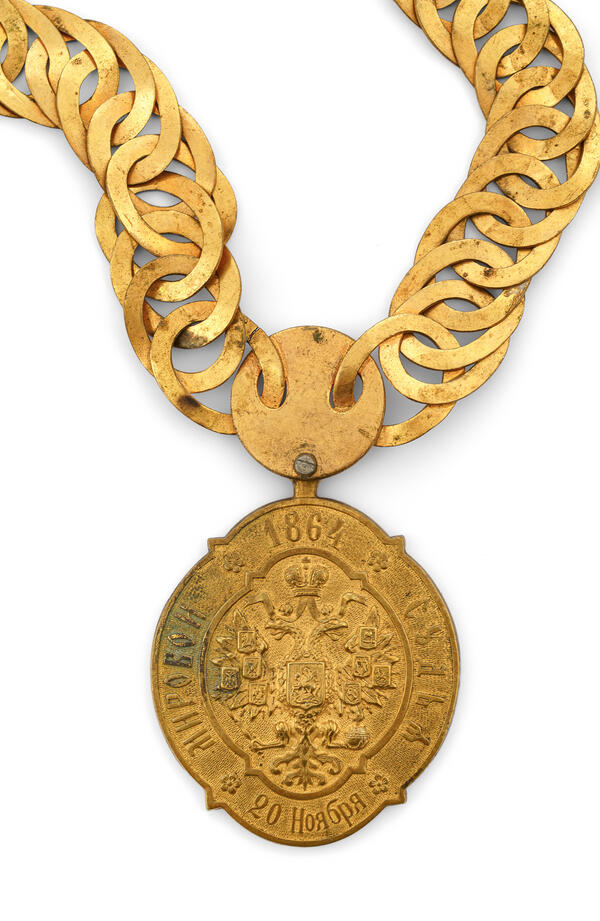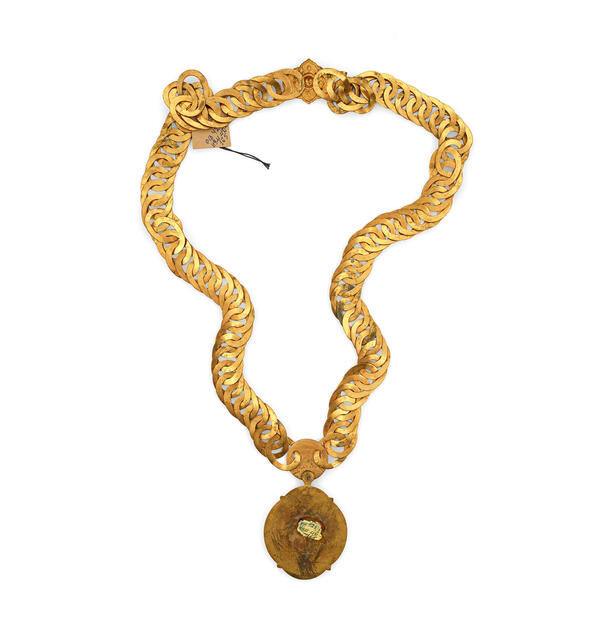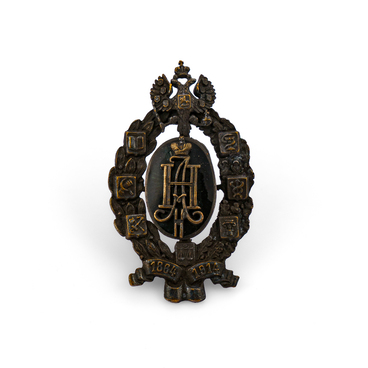The peasantry reform of the 1860s served as the basis for the establishment of a system of official insignia in Russia. There were a number of elected positions, holders of which were required to interact with people on a regular basis. This necessitated the need for a formal sign indicating their authority. The badge of a magistrate was established by Emperor Alexander II on December 31, 1864. It was worn on top of the robe suspended on a chain. The badge displayed in the Lipetsk Museum of Local Lore has a vertical oval shape with four spike-shaped protrusions along the edges. A rounded loop is provided at the top for attaching to a chain. In the middle of the badge, there is the coat of arms of the Russian Empire. The frame contoured by two embossed lines has an inscription along the edge of the badge reading “Magistrate”, with the dates — “1864” and “November 20” — engraved at the top and bottom, corresponding to the date of the judicial reform.
In 1864, as a result of judicial reform in the Russian Empire, new judicial statutes were introduced. The statutes provided for a unified system of judicial institutions based on the principle of formal equality of all social groups before the law. Court sessions became public, with mandatory participation of all the parties concerned. Reports on the sessions could be published in the press. One of the innovations was the creation of magistrate courts. Those were the courts designed to deal with minor cases and to relieve higher-level courts of some of their workload. Unlike conventional civilized courts, magistrates did not follow the usual procedure of competition between the parties. Instead, they were subordinate to the congress of magistrates, where the decisions of magistrates could be appealed. The congress of magistrates was convened in the administrative center of the uyezd, encompassing the uyezd including its towns, and divided into magistrate precincts. A magistrate was elected for each precinct, selected from local residents who were at least 25 years old, had higher or secondary education, and had served in positions where they could acquire practical skills in judicial activity for at least three years. They were elected at the local zemstvo assemblies.




